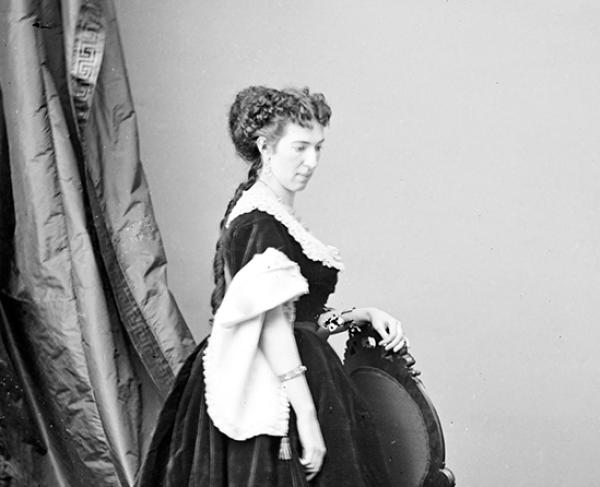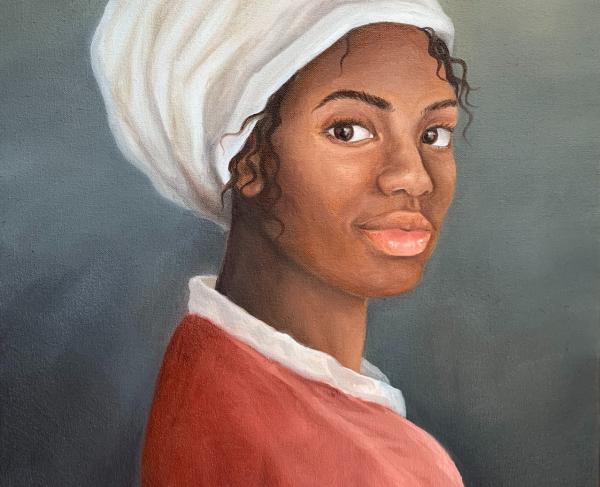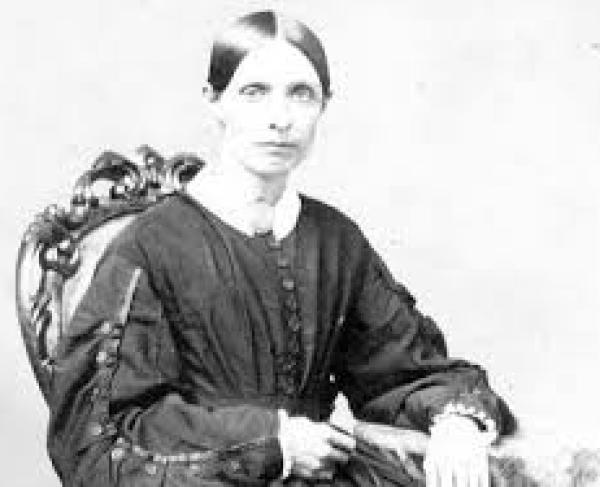Maria “Belle” Boyd

Maria Isabella "Belle" Boyd was one of the Confederacy's most notorious spies. She was born in May 1844 in Martinsburg, Virginia (now West Virginia) to a prosperous family with strong Southern ties. During the Civil War, her father was a soldier in the Stonewall Brigade, and at least three other members of her family were convicted of being Confederate spies.
Following a skirmish at nearby Falling Waters on July 2, 1861, Federal troops occupied Martinsburg. On July 4, Belle Boyd shot and killed a drunken Union soldier who, as she wrote in her post-war memoirs, "addressed my mother and myself in language as offensive as it is possible to conceive. I could stand it no longer...we ladies were obliged to go armed in order to protect ourselves as best we might from insult and outrage." She did not suffer any reprisal for this action, "the commanding officer...inquired into all the circumstances with strict impartiality, and finally said I had 'done perfectly right.'" Thus began her career as "the Rebel Spy" at age 17.
By early 1862 her activities were well known to the Union Army and the press, who dubbed her "La Belle Rebelle," "the Siren of the Shenandoah," "the Rebel Joan of Arc," and "Amazon of Secessia." In fact, the New York Tribune described her whole attire, "…a gold palmetto tree [pin] beneath her beautiful chin, a Rebel soldier's belt around her waist, and a velvet band across her forehead with the seven stars of the Confederacy shedding their pale light therefrom…the only additional ornament she required to render herself perfectly beautiful was a Yankee halter [noose] encircling her neck."
Boyd frequented the Union camps, gathering information, and also acting as a courier. According to her memoirs (which were exaggerated) she managed to eavesdrop through a peephole on a Council of War while visiting relatives whose home in Front Royal, Virginia was being used as a Union headquarters.
Learning that Union Major General Nathaniel Banks' forces had been ordered to march, she rode fifteen miles to inform Confederate Major General Thomas J. "Stonewall" Jackson who was nearby in the Shenandoah Valley. She returned home under cover of darkness. Several weeks later, on May 23, when she realized Jackson was about to attack Front Royal, she ran onto the battlefield to provide the General with last minute information about the Union troop dispositions. Jackson's aide, Lieutenant Henry Kyd Douglas, described seeing "the figure of a woman in white glide swiftly out of town...she seemed...to heed neither weeds nor fences, but waved a bonnet as she came on." Boyd later wrote, "the Federal pickets...immediately fired upon me...my escape was most providential...rifle-balls flew thick and fast about me...so near my feet as to throw dust in my eyes...numerous bullets whistled by my ears, several actually pierced different parts of my clothing." Jackson captured the town and acknowledged her contribution and her bravery in a personal note.
Boyd's flirtations with Union officers, however, were her strongest source of influence. Contemporaries noted that "without being beautiful, she is very attractive...quite tall...a superb figure...and dressed with much taste." On one occasion, she wooed a Northern soldier to whom, she wrote, "I am indebted for some very remarkable effusions, some withered flowers, and last, but not least, for a great deal of very important information...I must avow the flowers and the poetry were comparatively valueless in my eyes." Boyd continued, "I allowed but one thought to keep possession of my mind—the thought that I was doing all a woman could do for her country's cause."
Boyd was arrested six or seven times, but managed to avoid incarceration until July 29, 1862, when she was finally imprisoned in Old Capitol Prison in Washington, D.C. She was released after a month as part of a prisoner exchange, but was arrested again in July 1863. Boyd was not a model inmate. She waved Confederate flags from her window, she sang Dixie, and devised a unique method of communicating with supporters outside. Her contact would shoot a rubber ball into her cell with a bow and arrow and Boyd would sew messages inside the ball. In December 1863 she was released and banished to the South. She sailed for England on May 8, 1864 and was arrested again as a Confederate courier. She finally escaped to Canada with the help of a Union naval officer, Lieutenant Sam Hardinge, and eventually made her way to England where she and Hardinge were married on August 25, 1864.
Boyd remained in England for two years writing her memoirs, Belle Boyd in Camp and Prison, and achieving success on the stage. She returned to America, a widow and mother, in 1866 where she continued her stage career and lectured on her war experiences; she billed her show as "The Perils of a Spy" and herself as "Cleopatra of the Secession."
In 1869, she married John Swainston Hammond, an Englishman who had fought for the Union Army. In November 1884, sixteen years and four children later, she divorced Hammond. Two months later she married Nathaniel High, Jr., an actor seventeen years her junior. She died, in poverty, of a heart attack at age 56 on June 11, 1900 while on tour in Kilbourn (now Wisconsin Dells), Wisconsin. She is buried there, in Spring Grove Cemetery.
Contributed by Mary Lou Groh. Sources include Belle Boyd's autobiography, Belle Boyd, In Camp and Prison; Spies of the Confederacy by John Bakeless, published by J. B. Lippincott Co.; The War the Women Lived by Walter Sullivan, published by J.S. Sanders & Co.; Spies and Spymasters of the Civil War by Donald E. Markle, published by Hippocrene Books; Mighty Stonewall by Frank E. Vandiver, published by Texas and A&M Press; and The Secret War for the Union by Edwin C. Fishel, published by Houghton Mifflin Co.


